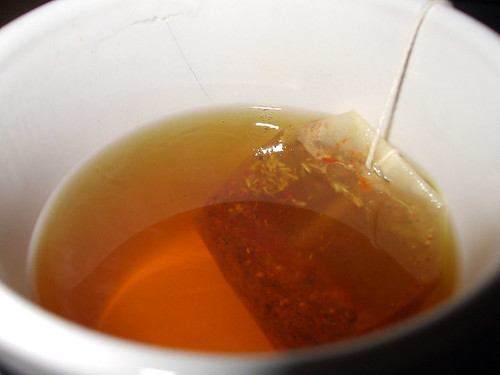(Photo credit: colourise)
Have you ever made a cup a tea and left the tea bag in too long? That strong tea probably made the insides of your mouth feel very dry and left a bitter taste. Or perhaps you've taken one of those stir stick from the coffee shop and absently chewed on it a bit. Again, you probably noticed that it wasn't that pleasant, leaving that dry sensation behind. These are both the result of tannin.
Tannin (geek speak: polyphenols) are present in a great deal of plant life, grapes not excepted. It comes from the skins, the seeds or pips, and stems of grapes or from the wood that a wine has been aged in. You'll notice it as a sensation or mouthfeel more than a flavor. However, it may have a bitter taste for some. I notice tannins mostly on my gums and my cheeks. You may notice it on the roof of your mouth. Next time you have a young red wine (or brew up some strong tea just for this test) swish the wine around to cover many areas and see where you notice this drying sensation the most.
Tannins act as a perservative for red wines (just as acid acts like a perservative for white wines.) Wines that are tannic when they are young benefit from aging. As the wine ages, the tannins will break down and join with other compounds in the wine to soften out and evolve into something much smoother. Wines like Bordeaux, Nebbiolo and Syrah (from the Rhone) will come across rough and crude in their youth but will evolve letting more of the fruit shine through as it ages. Many winemakers have become masters at managing tannins in more youthful wine, particuarly California Cabernet and Australian Shiraz makers.
While tannin is mostly found in red wines (the grape skins are left in contact with the juice longer) it is present in some whites, however, you'll see it more often described as astringency rather than tannin.
Try putting this into practice. This would make a very interesting tasting comparison. Try serving a young Bordeaux wine next to a California Cabernet of the same age and you'll notice a difference in tannins between the two. As a side note, I often do this wine comparison with guests at dinner parties with great success. Or maybe my guests are just humoring me.

No comments:
Post a Comment